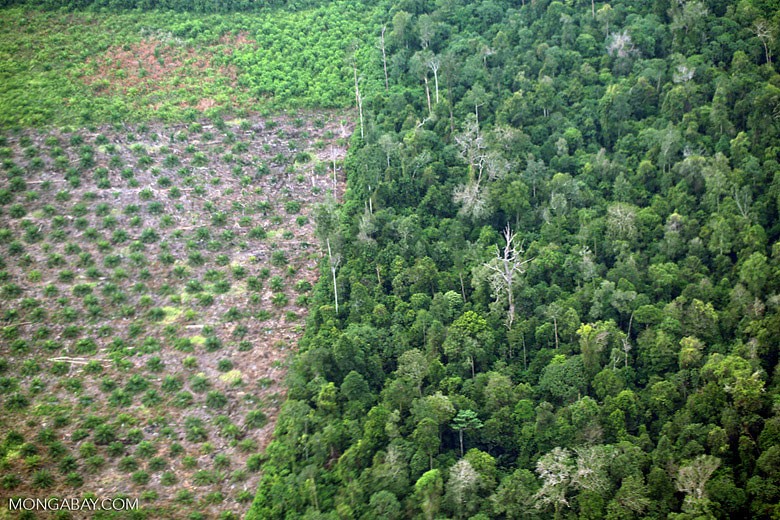India’s total forest and tree cover registered a growth of 5,188 sqkm over the past two years. This bit of positive news was the highlight of the India State of Forest Report 2019 (ISFR), released at the end of the year. “India is one of the few countries where forest cover is increasing and now almost 25% of the country is under forest cover,” said environment minister Prakash Javadekar at the report’s launch. He added that India is the only country to record growth in each category of forests assessed.
The story is not one of only growth though. Despite an overall gain of 3,976 sqkm of forests since 2017, 2,145 sqkm of dense forests have turned non-forests in the time. The loss was almost completely compensated by the conversion of 1,858 sqkm of non-forest land into dense forests. Over 8,500 sqkm of dense forests have become non-forests, while close to 5,500 sqkm have gone the other way since 2015. The northeast region, over 65% of which is classified as forests, continued to show a decline in forest cover losing about 740 sqkm in the past two years. A similar decline has been noted recorded forest area (RFA) in tribal districts, which contain nearly 60% of India’s forests.
Nevertheless, the growth of forest and tree cover in the country was welcome news for the government after a year in which deforestation and tree-cutting for development projects featured prominently in news cycles across the country. But as the report gets digested and its contents absorbed, worrying discrepancies that could overshadow any real gains have emerged.
Perhaps the biggest discrepancy lies in the mismatch between India’s total forest cover and its RFA. While the report claims an increase in forest area from 7,08,273 sqkm to 7,12,249 sqkm, only 5,13,436 sqkm of this is RFA, while the rest comes from forests identified outside forest area. While forest area within RFA has decreased over the past two years by about 330 sqkm, forest area outside RFA has increased by about 4,300 sqkm. Of the 7,28,520 sqkm identified as RFA, 2,15,084 sqkm or 30% has no forest on it.
With the ambiguity regarding India’s total forest cover and loss in its RFA, the increase presented in the ISFR 2019 can be boiled down to two major factors – its definition of forests and its methodology. The inference that increases in plantations and agro-forestry outside RFA is offsetting declines in natural forest cover gains traction when considering the operational definition of forests. According to the Forest Survey of India (FSI), any area over 1 hectare (ha) in size with a canopy that covers more than 10% of the geographical area regardless of their legal status or species composition can be considered a forest.
In terms of methodology, too, improved satellite imagery has a scale of 1:50,000 compared to 1:2,50,000 scale data used for ISFR 2017. The 5X improvement in scale has enabled more granular analysis of land cover, covering areas under 0.25 sqkm, which were left out under previous assessments. In effect, this has meant that several patches of non-forest land with significant tree cover and denuded forests that had shrunk to less than 0.25 sqkm in area, which were not captured in previous assessments, have been included in the latest ISFR as a gain in forests. ISFR 2019 has also included tree cover data based on highly contested state-level tree inventories to estimate tree cover data.
A culmination of these factors has resulted in Karnataka (1,025 sqkm), Andhra Pradesh (990 sqkm) and Kerala (823 sqkm) being the top three states in terms of net forest area gain despite severe droughts in the past few years. Comparatively, while Karnataka and Kerala have registered a growth of 84 sqkm and 62 sqkm in RFA, a loss of 273 sqkm was recorded in Andhra Pradesh.
On paper, this statistical jugglery can be passed off as creative accounting, but on the ground these ambiguities could have far-reaching consequences, especially in terms of India’s climate action. The current carbon stock in India’s forests is about 7.12 billion tonnes (26.358 billion tonnes CO2 eq., up from 7.08 billion tonnes (26.196 billion tonnes CO2 eq.) in 2017. While the rise brings some solace, it falls short of achieving India’s NDC in the Paris Agreement to create an “additional carbon sink of 2.5 to 3 billion tonnes of carbon dioxide equivalent” by 2030. Although India has not specified a baseline year for the calculations, even a relatively relaxed baseline of 2005 would imply a commitment of 33.747-35.6 billion tonnes CO2 eq. by 2030. A more ambitious baseline of 2015 would imply 35.312-37.162 billion tonnes CO2 eq.
At the current rate of increase of 21 million tonnes per year, India’s carbon stock would be 7.35 billion tonnes (27.213 billion tonnes CO2 eq.) by 2030. According to FSI’s business as usual scenario, India’s carbon stock is estimated to be 31.87 billion tonnes CO2 eq. by 2030, still short by at least 2 billion tonnes CO2 eq. The accuracy of these estimates is further brought into doubt by the expanding footprint of plantations and ‘trees outside forests’, already at 9% of India’s total forests.
If afforestation continues to rest on plantations, which offer nowhere near the same ecological services or carbon sequestration potential as natural forests, the NDC will slowly but surely slip out of reach. Although India is currently using these contentious figures to posture as a leader of afforestation and climate action, the danger that such inconsistencies will be used against it in the future and potentially deadlock climate negotiations for years is present and clear.
About The Author
You may also like
India’s EV revolution: Are e-rickshaws leading the charge or stalling it?
Is pine the real ‘villain’ in the Uttarakhand forest fire saga?
NCQG’s new challenge: Show us the money
India’s energy sector: Ten years of progress, but in fits and starts
9 years after launch, India’s solar skill training scheme yet to find its place in the sun


